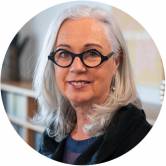Public sector governance: Balancing purpose and pressure
Why public boards must lead with clarity, resilience and long-term vision in a shifting political landscape.
The first of the Four Pillars of Governance Best Practice is Defining Purpose. This encompasses, not only what Simon Sinek would call your company’s “why”, but also defining, and overseeing, your strategic direction.

OPINION: Larry Fink, in his 2020 letter to CEOs of companies in which Blackrock invests, talks of the issues that are pivotal to creating durable value. These issues include long-term strategy.
But perhaps it is in his 2019 letter that we get an even more relevant insight when he states: “As we enter 2019, commitment to a long-term approach is more important than ever – the global landscape is increasingly fragile and, as a result, susceptible to short-term behaviour by corporations and governments alike.”
I would suggest that there are few boards today that don’t recognise the need to fundamentally move from focusing on the short-term to a much longer term definition of success which encompasses areas such as environmental, employee, social and governance performance.
Yet, if this is the case, why are we still limiting our strategic lens to a short-term horizon of typically three to five years?
Some will say the reason is that as we are operating in a VUCA (volatile, uncertain, complex, ambiguous) world, and to look further out is a waste of time. However, others may combat that view by saying we are actually operating in a BANI world, a world of brittleness, anxiety, non-linearity and incomprehensibility, and one which I would suggest, requires us to be even more prepared for a variety of possible and plausible futures.
At this point, it may be helpful to state that foresight is about provocations not predictions.
Foresight is a means of identifying patterns and trends, building scenarios, analysing those scenarios, and identifying the consequences of them. This allows you to identify the possible futures that you would prefer, along with the levers you may have to influence that future.
So how far out is the future? Typically a forecast will look at least ten years into the future. One of the reasons for seeking this timeframe is that it is much easier for us to leave behind our current issues, thinking and day to day worries, along with the emotions that come with its contents.
Through including foresight in strategy sessions we are able to take an anticipatory rather than reactive view, enabling boards to integrate long-term insights into shorter-term actions – being prepared.
Many companies have foresight teams internally including Telstra, BASF, Siemens, Daimler, and Philips. Such foresight teams have provided significant value to companies in the past. For example Shell Oil was sitting at 4th or 5th in the world prior to anticipating the oil crisis by a decade, enabling it to become the number one oil company in the world.
There are also those stories of companies that didn’t take advantage of their foresight, such as Kodak, which saw the rise of digital photography and in fact invented the first digital camera, but failed to harness that opportunity and we all know the ultimate outcome.
Microsoft recently announced that it will be carbon negative by 2050, aiming to reduce and ultimately remove Microsoft’s carbon footprint. Yes that is all the direct emissions the company has ever made. It sounds ridiculous, but so much more inspiring than reducing their carbon emissions by 20-30% over the next 30 years.
As Professor Emeritus and former Director of the Hawaii Research Centre for Futures Studies Jim Dator said: “Any useful statement about the future should at first seem ridiculous.”
I will leave you to consider all the benefits to Microsoft of this future, suffice to say that foresight will have had an integral role in developing this inspiring, if ridiculous, goal.
Some tips around foresight:
Finally, to paraphrase the Cheshire Cat from Alice in Wonderland: “If you don’t care where you want to get to, then it doesn’t much matter which way you go.”

Lynda Carroll CMInstD is Align Group’s Managing Director and primary shareholder. She has worked for nearly thirty years in senior management and consulting roles interfacing with chief executives, senior managers, boards and key shareholders/ stakeholders.
Lynda also has over 20 years of governance experience on state, private and not-for-profit boards. She currently sits on the New Zealand Army Leadership Board and the New Zealand String Quartet Trust and is a lay member of the Professional Conducts Committee.
The views expressed in this article do not reflect the position of the IoD unless explicitly stated.
Contribute your perspectives and expertise on an area of governance to the IoD membership and governance community. Contact us.